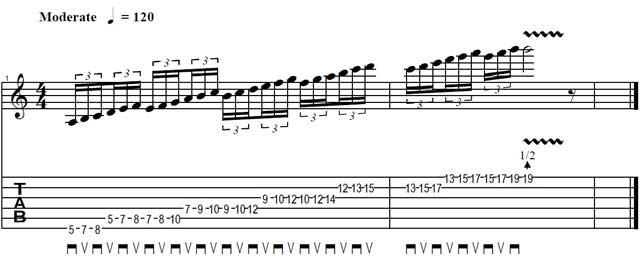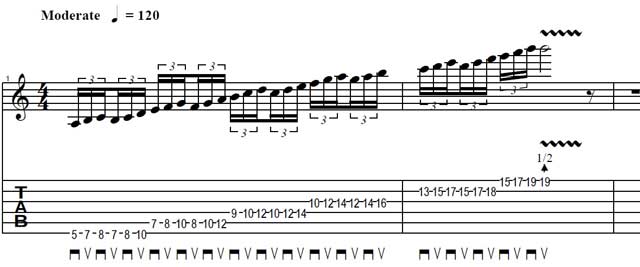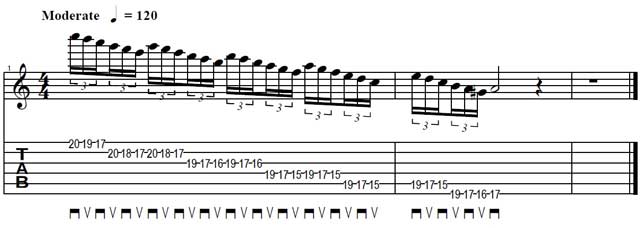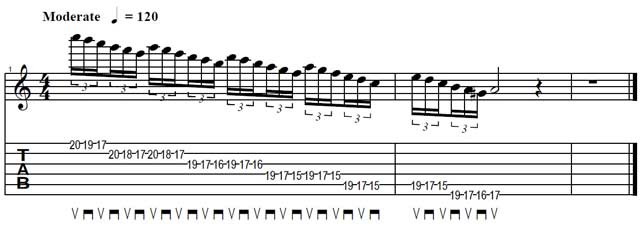Strategic String Crossing for Killer Picking Runs

If you’ve been playing guitar long enough, you probably already know about inside picking and outside picking.
For example, inside picking is the sensation of playing an upstroke on the A string followed by a downstroke on the D string. Your pick feels like it is moving inside those two strings.
Outside picking would be a downstroke on the A string followed by an upstroke on the D. Here your pick moves from the furthest sides of each string by reaching over the top of them. Chances are, you're better at one of these than the other.
Of course, we can always practice and get better, but sometimes there’s no getting away from the fact that we just prefer one way over the other because it works best for us. And remember; the listener doesn’t care either way.
There’s a way in which we can exploit our preferences to our advantage. Every famous guitarist works to their own strengths, and that’s what you’re going to do here. If you played a three-note-per-string run from the low E to the high E, you’ll encounter both string-crossing mechanics. If you only want to use one of those mechanics, the way to do that is to change the number of notes on each string, which will change the pick stroke that occurs just before you change.
With three-note-per-string licks, the easiest way to do that is just to add another three-note shape next to the one you’ve just played.

Take a look at EXAMPLE 1. This is a three-note-per-string run in A Aeolian that has been worked so that it uses only outside picking. With an ascending lick like this, the key is to make the last pick stroke before the string change a downstroke. Now, if we want to construct a lick that uses only inside picking, we’ve got to arrange it so that the last pick stroke we play before changing strings is always an upstroke. EXAMPLE 2 is one possible way of doing that.
All the latest guitar news, interviews, lessons, reviews, deals and more, direct to your inbox!

The same thing can also be applied to descending licks. However, with a descending string-crossing motion, the stroke direction of inside and outside picking is the reverse to the ascending version. On a descending lick, a downstroke on the high E followed by an upstroke on the B would be inside picking. An upstroke on the high E followed by a downstroke on the B is outside picking. With that in mind, let’s look at EXAMPLE 3.

Once we’ve got the first three notes out of the way and we’re on to the B, we just add another three-note rep, which changes our last pick stroke before the change to a downstroke.
EXAMPLE 4 shows us how to play the same lick using only outside picking.

We start the lick with an upstroke, giving us a pattern of U,D,U. This means we need to play only three notes on the high E to get an outside picking feel. The same thing applies to all the previous examples. From there, we add an extra three-note rep on the subsequent strings to maintain that outside picking feel. That’s all there is to it!
Ben Higgins started playing guitar at age 10. He’s released five solo albums and continues to teach guitarists from around the world. In 2012, he released the YouTube video “30 Shredders in One Solo,” in which he emulated the style of 30 of the world’s greatest guitarists. He followed it up with “30 Misplaced Shredders” and “Another 30 Shredders." In 2016, Ben developed his “Badass…” online courses, which are aimed at improving people’s technique in picking, sweeping and hand synchronization. To find out more about Ben and his courses, visit benhigginsofficial.com.
